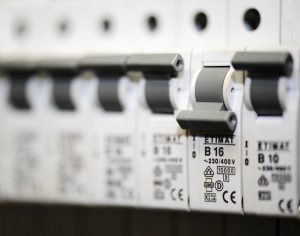
Fuses are commonly used in circuits to protect electrical devices from overcurrent. You can find them in automotive electrical systems, aerospace electrical systems, homes, commercial buildings and more. If the current traveling through the circuit exceeds that for which the fuse is rated, the fuse will blow. The blown fuse will then break the circuit so that all of the connected devices are protected from damage.
While all fuses are designed to protect the devices on a circuit from overcurrent-related damage, they are available in different types. There are link type fuses, for instance. Also known as high-rupturing capacity (HRC) fuses, they feature a time-delayed action.
What Is a Link Type Fuse?
A link type fuse is a fuse that uses a time-delayed function to maintain the integrity of the circuit for a short period. It’s known as a link type fuse because it features two fuse links. One of the fuse links comes from low resistance and the other fuse link comes from high resistance.
Link type fuses contain two conductive links. The links are designed so that only a limited amount of electricity can flow through them. If the current exceeds this limit, they will blow. Link type fuses have a high-resistance fuse link and a low-resistance fuse link, the former of which allows for a higher current level.
What Are Link Type Fuses Used For?
Link type fuses are used to maintain the integrity of circuits for a short period during overcurrent events. Normally, when an overcurrent event occurs, fuses will blow. Blown fuses will then break the circuit while subsequently disrupting the operation of all devices on the circuit. Link type fuses still blow, but they are designed to maintain the integrity of the circuits with which they are used for a short period.
During an overcurrent event, the low-resistance fuse link will initially blow. The high-resistance fuse link will then take over by providing a conductive pathway for the electricity. The high-resistance fuse link will continue to provide this pathway until the current drops back to an acceptable level. If the current continues to rise, the high-resistance fuse link will blow as well.
In Conclusion
Fuses come in different styles, one of which is link type. Link type fuses feature two fuse links that allow for a delayed action. During an overcurrent event, the low-resistance fuse link will blow first. The high-resistance fuse link will then take over so that the circuit will remain closed and functional until the current has dropped back to an acceptable level.
